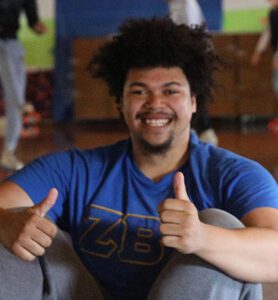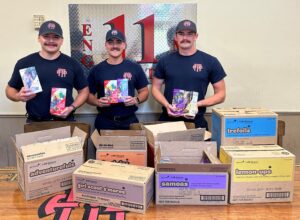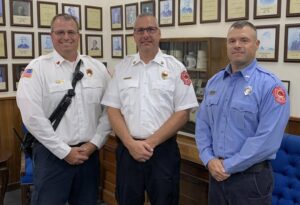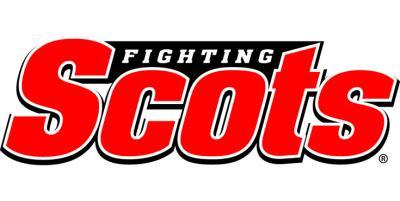**courtesy of Tom Best
And Now You Know More: The Cardinals and Cubs: What Players They Share in Common
If any of you have a household like mine, you have a home of divided loyalties between the St. Louis Cardinals and the Chicago Cubs. For instance, my wife and I have a flag flying on our front porch which says: “A House Divided: Cardinals and Cubs.” Those of you who know Pam and I are aware that I am the diehard Redbird fan; she loves her Cubbies.
Over the last few years, we have visited both Busch Stadium and Wrigley Field for several interdivision games. I recently took my wife and step-daughter to a Cardinals and Cubs afternoon game at the Friendly Confines. The Cubs won 2-0. I stood respectfully while they gleefully sang out “Go Cubs Go!” at the end of the game.
But in this program, I want to address an interesting element to this friendly rivalry—players who have played for both teams.
Some of these unions are better known than others. For instance, some of you know that recently Dexter Fowler was a member of the Cubs before he later joined the Cardinals. Fowler, who was traded to the Cubs in 2015, became one of the key players on their 2016 World Series victory—their first championship in over a hundred years. Then, so much beloved, when he became a free agent at the end of that season, who would have thought that the Cubs would have let him go? But Fowler declined their offer and looked for a bigger salary on the open market. Of course, who was the team that thought he turn to?—the St. Louis Cardinals. Fowler looked to be a star who could help lead the Redbirds to their first World Series victory since 2011—what would be their twelfth—versus three for the Cubs. However, his potential never panned out. Oh, he had his moments—like a home run saving catch that I saw him grab against the Washington Nationals which helped Adam Wainwright win a game. Unfortunately, Fowler never returned to that championship form. Some Redbird fans felt he never erased his allegiance to the Cubs—why, even his newly born daughter was named “Ivy.”
But there are far more famous players who called both Chicago and St. Louis home. Some of these players harken back to the earlier days of their rivalry.
Some of these players are hall of famers. For example, there was Rogers Hornsby. He played for the Cardinals from 1915-1926 and then again in 1933. He was a Cub from 1929-1932. He was, and remains, better known for his days in red attire when he recorded a modern-record of batting .424 in 1924. He was their player-manager when he helped the Cardinals win their first World Series against the New York Yankees in 1926. But then he went over to the Cubs in 1929 and stayed there through the 1932 campaign. In this era, he remained an impact player who helped guide the Cubs to World Series appearance. After a lackluster 1932 season, he was released and went—you know where—back to St. Louis for a lone final season. Even after that, he came back to the Cubs as an instructor, and in his later years was known for helping to nurture the future talents of Cub Hall of Famers Billy Williams and Ron Santo.
Another Hall of Famer who called both Midwestern cities home was the comical, but very talented, Dizzy Dean. He was a Cardinal from 1930-1937, and a Cub from 1938-1941. Like Hornsby, he is better known as a man with the “Birds on the Bat,” as he helped guide them to the 1934 Championship. And what did he do that year on the mound—oh, just win 30 games. But he broke his toe in the 1937 Allstar game and ended up hurting his arm while trying to pitch with an altered delivery. He was never the same. Nevertheless, hoping that his best days were not behind him, the Cubs took a chance on Dizzy and signed him in 1938 for $185,000. He got only 10 starts that season, although he did have a decisive victory late in the year to help send the Cubs to another World Series. Cub fans will know they fell short against the American Leaguers.
A Cardinal and Cub with a local connection was Grover Cleveland (or Pete) Alexander. He competed for the Cubs from 1918 to 1926 before moving to the Cardinals in 1926, where he continued pitching until 1929. Alexander, who earlier came up in the minor leagues when pitching for a Galesburg team against a Monmouth squad, first became a star for the Philadelphia Phillies before being traded to Chicago on the North Side. He was great for them in 1919 and 1920, while playing for some mediocre teams. Despite his aging arm, the Cardinals took a chance on “Old Pete” in 1926. And they were very glad they did. In one of the most famous relief appearances ever to occur in a clinching World Series game, Alexander came into game #7 still hungover from celebrating a game #6 victory he had earned. With bases loaded and two-out in a one-run game, he struck out Yankee Tony Lazzeri. He hung on to pitch for two more scoreless innings and gave the Cardinals the chance they needed to capture the Championship.
Of course, the most famous of these Hall of Famers who saw his address change to St. Louis was Lou Brock. To Cub fans, they will tell you that this has to be the hardest trade to ever swallow. Ask them who Ernie Broglio was and they will repeat that name with some disgust. In 1964, Brock and Broglio were part of a blockbuster six-player trade. Broglio had been a twenty-game winner for the Redbirds and it looked like the Cubs were getting the better part of the deal. After all, who was this “Lou Brock,” a smaller-sized player who the Cubs hoped would develop into a power hitter with the alluring short fences in windy-Wrigley Field? But the Cardinals saw him differently. They told the 25 year-old swifty that he was not only free to use his ability to spray the ball, but likewise utilize his speed and base-running sense to spark the top of the Cardinal lineup. As a result, Brock became on the most pivotal players on the 1964 World Series team that beat the Yankees. By the time he retired, he had led the Cardinals to two more World Series, and led the major league in his career topping stolen base record. He also piled up 3,000 hits—I was there that night in 1979 when he got that hit—and against who? Just Dennis Lamp and the Cubs. What happened to Broglio? He had hidden the fact that he had a suffered an elbow injury and went 7-19 with a 5.40 ERA over the next two years he pitched with the Cubs.
So, this is certainly a storied rivalry, which has been played out over 2,400 times, with some great players who called each city home. I could have mentioned many others—from Ted Abernathy to Todd Zeile, the oddly named Rabbit Maranville and Pickles Dillhoefer, and better-known pitchers such as Dennis Eckersley, Lee Smith, and Bruce Sutter—now all Hall of Fame relievers! Such players understood this rivalry very well. For example, how many of you remember Ryan Theriot, who played for both teams. He famously quipped, upon appearing in his first game as a newly minted Cardinal, trying to decide which of these two teams to love when you have played with both during your career is like asking: “Who do you love more, your mom or your dad?”















